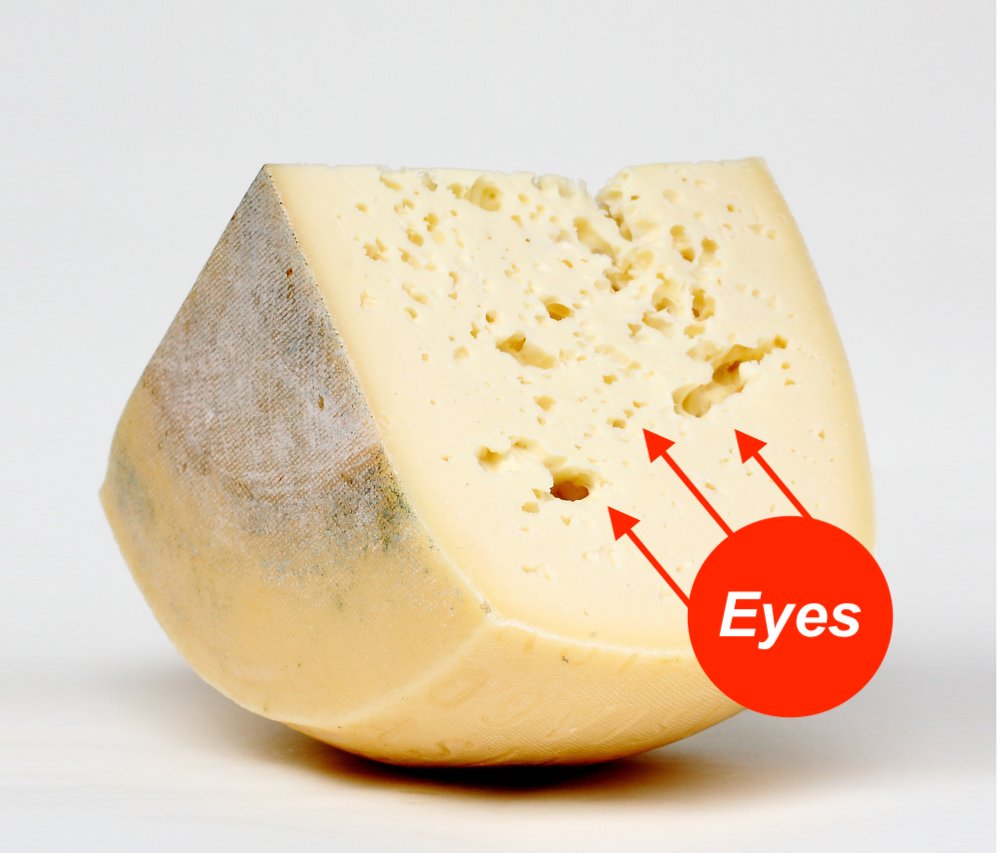Last Updated on November 5, 2022 by Aaron
Do you know how asiago cheese gets its holes?
In this blog post, we will explore the science behind these cheese holes!
Asiago is a type of aged Swiss-style alpine cheese (1) but not as popular as the Emmental or Gruyere cheese. It’s originated near the alpine region of northern Italy. In fact, they are produced similarly – read Asiago vs Swiss cheese (Emmental) and Asiago vs Gruyere.
Swiss cheese is characterized by its signature holes. Asiago has holes or eyes too, but it’s often irregular and smaller that sometimes look like a crack or split of the cheese – Especially for the Asiago Pressato (or pressed asiago).
Meanwhile, the other variety, asiago d’allevo usually looks normal with tiny round regular holes or can be “blind” too.
That’s due to the compact pressing stage (without whey) during the production of asiago cheese. Where, the bacteria fermentation in the ripening stage releases carbon dioxide gas, which is then trapped in a compact structure and forms irregular holes.
Where’s the carbon dioxide from?
The asiago cheese is typically produced from raw unpasteurized milk, it contains great strain diversity of the natural propionic-acid-synthesis-bacteria in milk, for example, the P. freudenreichii, P. acidipropionici, and P. microaerophilum were all responsible for producing propionic acid and carbon dioxide CO2 as the end product.
Several other strains of lactococci, Lactobacillus, Streptococcus, also take roles in the metabolism of lactic acid and addition carbon dioxide formation.
For example, the metabolizing of citrate to form carbon dioxide and diacetyl.
Diacetyl may contribute to the asiago’s buttery flavor (2).
Reference:

